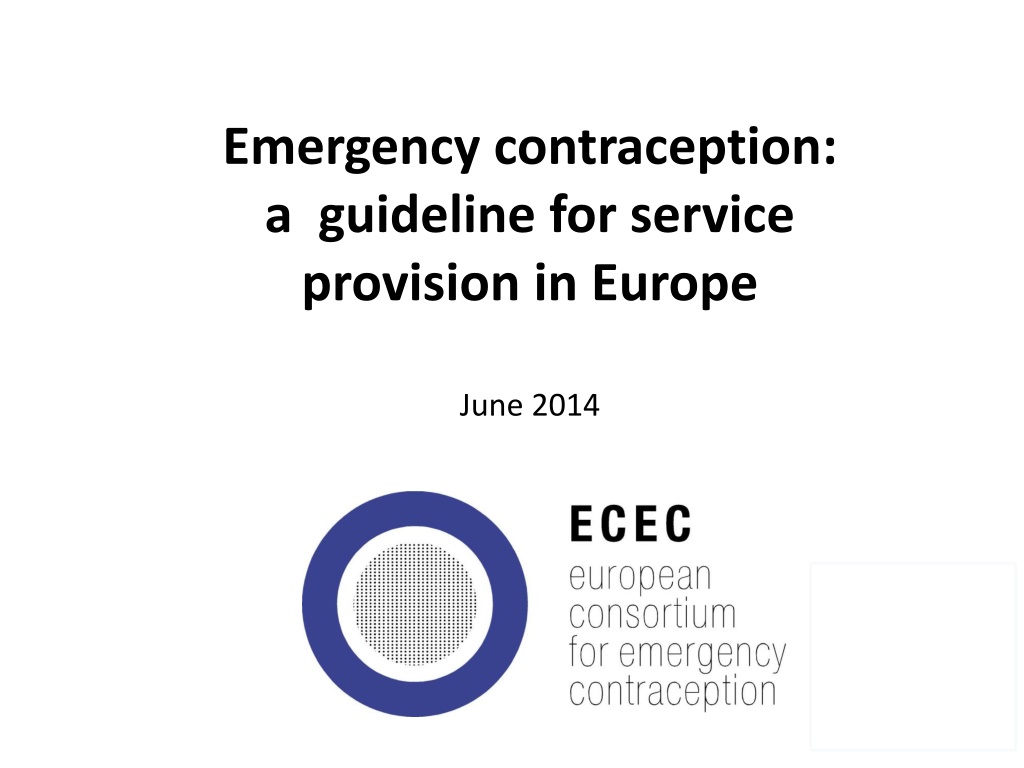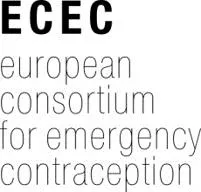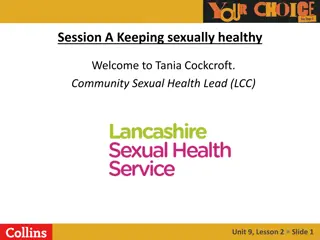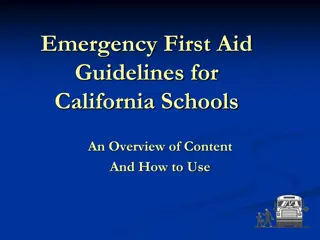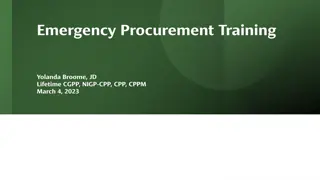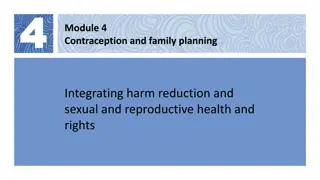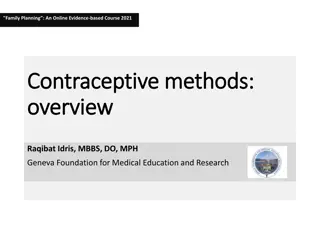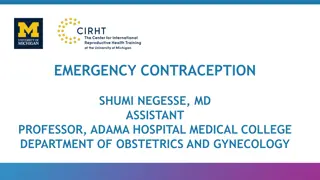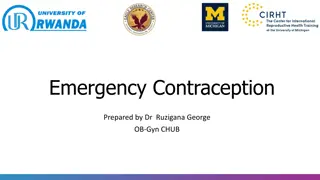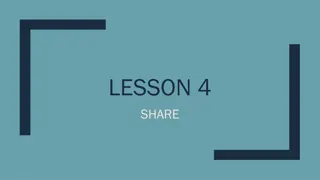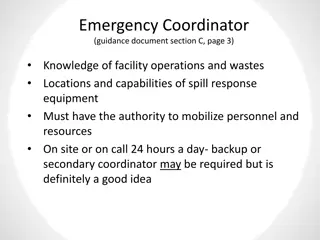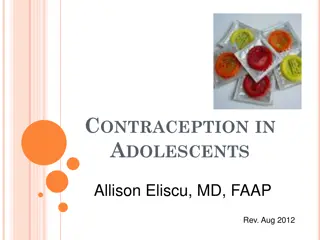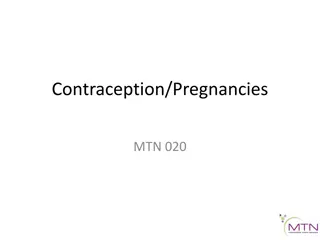Emergency Contraception Guidelines for Service Provision in Europe
This content discusses the importance of standardizing emergency contraception (EC) service delivery in European countries to ensure equitable access. It highlights the challenges faced, such as the lack of guidelines in some countries and the role of different healthcare professionals in EC provision. The European Consortium for Emergency Contraception (ECEC) aims to expand knowledge and access to EC while promoting evidence-based practices. The guideline outlines methods, addresses common issues, and emphasizes the need for ongoing contraception and STI risk assessment.
Download Presentation

Please find below an Image/Link to download the presentation.
The content on the website is provided AS IS for your information and personal use only. It may not be sold, licensed, or shared on other websites without obtaining consent from the author. Download presentation by click this link. If you encounter any issues during the download, it is possible that the publisher has removed the file from their server.
E N D
Presentation Transcript
Emergency contraception: a guideline for service provision in Europe June 2014 1
ECEC mission To expand knowledge about and access to EC in European countries, and to promote the standardization of EC service delivery in the European context in order to ensure equitable access within the region. 2
Why a new guidelines template? ECEC assessed EC guideline availability in European Union countries in 2012-2013. Main findings: 5 countries do not have any guidelines. 11 countries have guidelines that do not include UPA EC. 11 countries have up-to-date guidelines, mostly issued by OB/GYN societies. General practitioners and pharmacists are rarely involved in the development of guidelines. 3
Read more about updated guideline availability at: www.ec-ec.org/emergency-contraception-in-europe/guidelines/ 4
Participatory review First draft reviewed by: ECEC Board ECEC Advisory Committee Clinical Effectiveness Unit, Faculty of Sexual and Reproductive Healthcare (UK) International Consortium for Emergency Contraception (ICEC) Final draft reviewed and approved by the European Society of Contraception and Reproductive Health Internal Scientific Committee in January 2014. 6
The guideline Methods included: LNG UPA Cu-IUD Published in English for now, but template available for translation and adaptation for use at the country level. ECEC will regularly update the document. 7
The guideline: Outline Emergency contraceptives in Europe How to deal with a request for EC Could she already be pregnant? Is there a risk for pregnancy? Are any cautions necessary? What methods should be offered? What issues should an EC guide address? Side effects, vomiting, follow up References 8
The guideline: Issues covered Ongoing contraception STI risk assessment Can pregnancy risk be quantified? What if he did not ejaculate? Can EC hurt an implanted pregnancy? Are there any age limits? What about after rape? Is timing of use important? How many times can EC pills be used? 9
The guideline: Issues covered Can breast feeders use EC pills? Can EC increase risk of infertility, ectopic pregnancy, stroke, STIs? Are any tests necessary? Where should it be available? Who can issue it? Can professionals refuse to provide EC for personal reasons? Can it be issued in advance? Can it be issued to a third party? What if there is no licensed version? 10
A template for national adaptation and use Conceived as a template, to be adapted according to national legislation and product availability. In 2014, Italy, Portugal, Romania, and Spain expressed interest in adapting this tool. 11
Added value National adaptation and review processes: key opportunity to strengthen knowledge of other gatekeepers. ECEC recommends the adoption of participatory reviews in cooperation with national stakeholders: contraception societies, pharmacist associations, primary care representatives, OB/GYN societies, and other key organizations. 12
Thank you! ECEC thanks the ESC for their financial and technical support and all the experts and ECEC colleagues who generously contributed to this effort. 13
If you are interested in using this tool in your country, contact ECEC at: info@ec-ec.org Download the guidelines at www.ec-ec.org Thank you! 14
